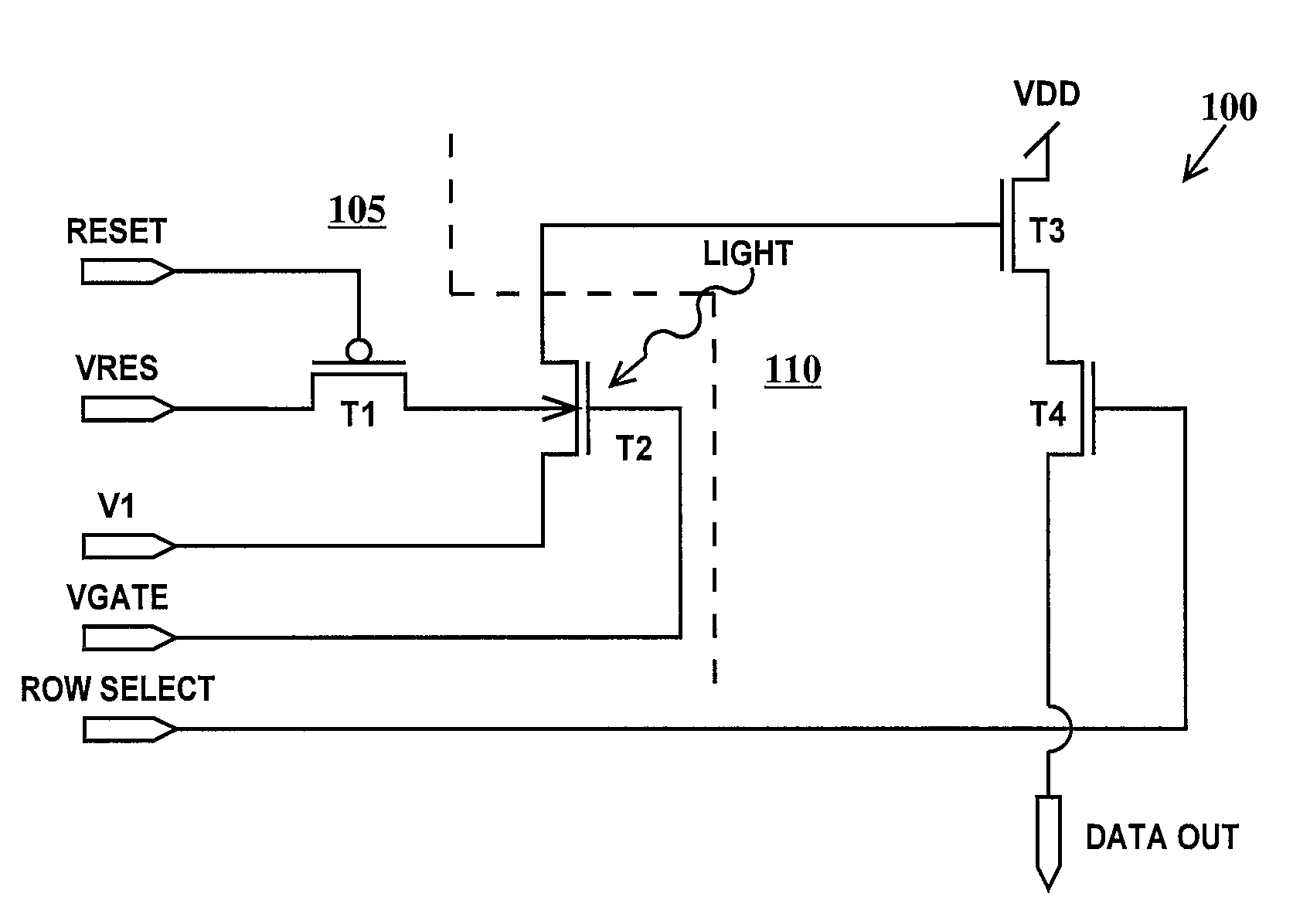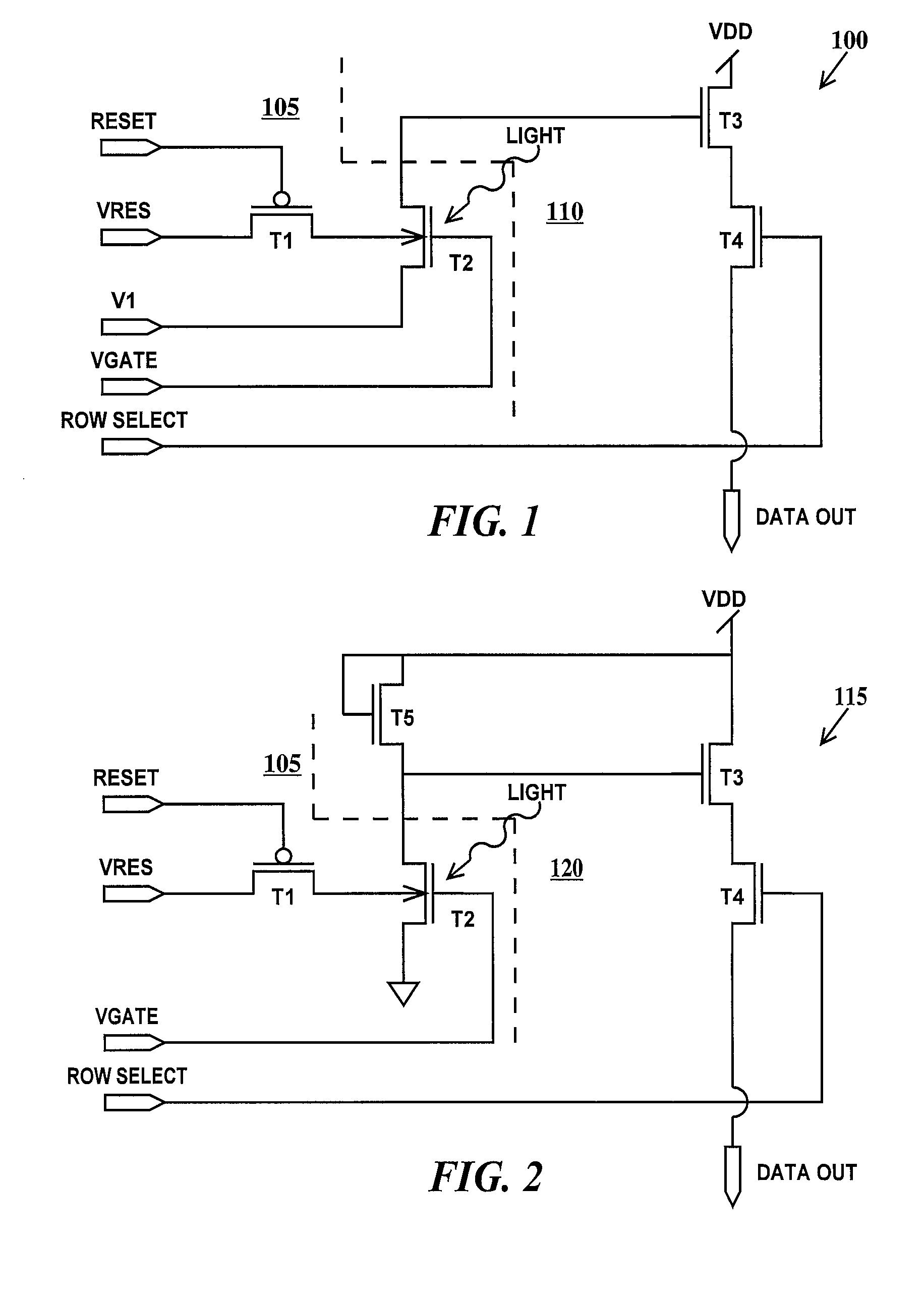Body potential imager cell
a body potential and imaging cell technology, applied in the field of solid-state imagers, can solve the problems of low contrast, high power consumption, and relatively slow shutter speed of devices using imaging arrays, and achieve the effect of reducing the threshold voltage of collection transistors
- Summary
- Abstract
- Description
- Claims
- Application Information
AI Technical Summary
Benefits of technology
Problems solved by technology
Method used
Image
Examples
Embodiment Construction
[0019]FIG. 1 is a circuit diagram of a first imaging cell circuit according to the present invention. In FIG. 1, an imaging cell circuit 100 includes a detector section 105 and a read out section 110. Detector section 105 includes a reset PFET T1 and a collection NFET T2. Read out section 110 includes NFETs T3 and T4. The drain of PFET T1 is connected to a VRES pin. The VRES pin is connected to a reset voltage supply. The reset voltage level may be ground or some other starting bias voltage for the well. The gate of PFET T1 is connected to a RESET pin, and the source of PFET T1 is connected to the body of NFET T2. The drain of NFET T2 is connected to a V1 pin, the gate of NFET T2 is connected to a VGATE pin and the source of NFET T2 is connected to the gate of NFET T3. NFET T3 is a source follower. The drain of NFET T3 is connected to a voltage source VDD and the source of NFET T3 is connected to the drain of NFET T4. The gate of NFET T4 is connected to a ROW SELECT pin and the sour...
PUM
 Login to View More
Login to View More Abstract
Description
Claims
Application Information
 Login to View More
Login to View More - Generate Ideas
- Intellectual Property
- Life Sciences
- Materials
- Tech Scout
- Unparalleled Data Quality
- Higher Quality Content
- 60% Fewer Hallucinations
Browse by: Latest US Patents, China's latest patents, Technical Efficacy Thesaurus, Application Domain, Technology Topic, Popular Technical Reports.
© 2025 PatSnap. All rights reserved.Legal|Privacy policy|Modern Slavery Act Transparency Statement|Sitemap|About US| Contact US: help@patsnap.com



